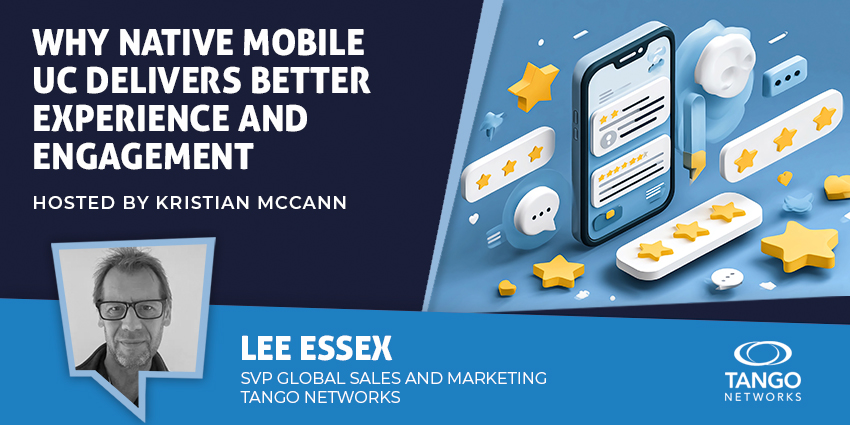AT&T has announced the expansion of its Office@Hand unified communications platform through an extension of its 10-year partnership with RingCentral, incorporating RingCentral’s RingCX contact center technology.
This integration adds advanced AI-powered omnichannel contact center capabilities to AT&T’s existing UCaaS offerings. The enhanced Office@Hand service will be available to AT&T business customers across the US, aiming to improve customer interaction management and employee productivity through a single, cloud-based platform.
“By expanding our decade-long partnership with RingCentral, we are able to bring contact center and conversational intelligence functionality to our portfolio,”
Joe Petrocelli, VP of Communications Services, AT&T Business, said.
This announcement fits into a wider industry pattern where service providers are increasingly turning to RingCentral’s technology to underpin their own UC and CC solutions.
Digging into the Details of AT&T–RingCX
The expanded solution leverages AT&T’s extensive network infrastructure combined with RingCX’s cloud-native contact center platform, which supports voice, video, chat, SMS, and over 20 digital channels.
This allows businesses of all sizes to unify their communications and customer support functions while benefiting from AI-driven tools such as real-time transcription, sentiment analysis, and agent coaching.
This seamless integration allows businesses to manage customer interactions across voice, SMS, chat, and popular digital channels from one platform.
“By expanding Office@Hand Business Communication with RingCX Contact Center and RingSense AI functionalities, we’re delivering a unique platform, enhancing customer experiences, and empowering end-users to improve their core business,”
Homayoun Razavi, EVP & GM, Global Strategic Partnerships at RingCentral, said.
By adopting RingCX technology, AT&T is accelerating time-to-market and enriching its Office@Hand brand with advanced AI capabilities that are increasingly demanded in customer service environments.
But it’s not just AT&T that is seeing the utility. BT, one of the UK’s biggest telcos, also approached RingCentral to implement RingCX into its CCaaS offering.
RingCX Uncovered: Why Is It Cutting Through to Telcos?
Digging into BT’s arrangement with RingCentral, similarities begin to emerge as to why the platform is proving popular among telcos.
Both exemplify how these larger companies leverage RingCX to broaden their UC and CC offerings to their own customers without having to build solutions themselves from scratch.
“AT&T’s integration of RingCentral’s AI-powered contact center and conversational intelligence into Office@Hand delivers the comprehensive, AI-first customer experience platform enterprises are demanding,”
Dave Michels, principal analyst and founder of TalkingPointz, said.
“This partnership demonstrates how service providers can differentiate through AI while reducing customer complexity and costs—creating a compelling value proposition for organizations modernizing their customer engagement strategy.”
Like AT&T, RingCentral has a decade-long partnership with BT. This fact alone has helped give it a foot in the door, along with time to build partnerships and a solid understanding of the telco vertical and its needs.
Like with AT&T, its integrated contact center solution Cloud Work RingCX combines the elements of the telco’s strength—in this case BT’s network security and fraud management resources—with RingCX’s omnichannel and AI-driven capabilities.
For both telcos, the ability to incorporate AI is also a big draw of using RingCX to offer differentiated, AI-powered UC and CC services under their own brands.
This white-label or embedded technology approach allows these firms to innovate rapidly and deliver value-added features while reducing platform development risks and costs.
RingCX Dialing in to Telco Success
The strategic adoption of RingCX by multiple major telcos illustrates a broader shift in the UCaaS/CCaaS landscape toward platform-based partnerships and embedded technologies.
Companies want flexible, scalable, AI-powered solutions that they can confidently brand and deliver without building from scratch—a gap RingCX fills effectively.
Its long history with telcos and its own status as a telephony company means it was well positioned to serve these companies.
That, plus its investment in AI and conversational analytics, combined with its cloud-native, API-rich platform, has positioned it as a silent engine powering a growing number of service provider UC/CC offerings.
As the demand for seamless, omnichannel, and AI-augmented communication experiences continues to climb, the role of foundational platforms like RingCX will only grow. The question is no longer why companies turn to RingCX, but how quickly competitors will respond with comparable embedded technology strategies.







